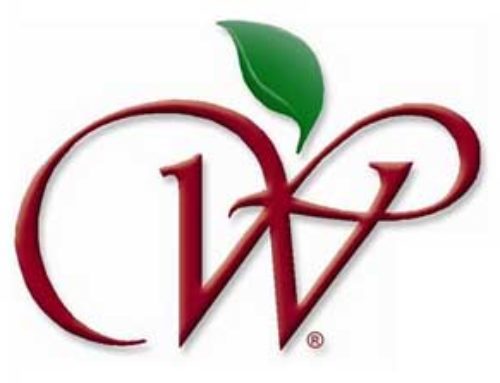
Washington growers can now start placing nursery orders for WA 64, the newest release from Washington State University’s breeding program.
Because selecting a rootstock and training system can be a difficult decision for growers trying a new variety, WSU established a demonstration block at a research farm in Prosser to showcase how the new variety performs when paired with different rootstocks and systems. With regularly scheduled field days planned — including a preharvest event this week — the industry will get to watch the trees grow under different management approaches.
The planting includes G.41, G.890, G.969 and B.9 rootstocks. Each rootstock is then planted in a single-leader system, two-leader systems both vertical and V, and a UFO-style multileader system.
The goal isn’t to find a perfect system, said WSU extension specialist Bernardita Sallato. Instead, the planting gives growers a chance to see the different systems in person and consider which might be the best fit for their operations.
“Every farm has their own traditions for tree training,” said Dave Gleason, a horticulturist with Domex Superfresh Growers and an advisor to Sallato’s demonstration orchard. As such, after visiting the block, different growers might take away different approaches to the new variety.
His takeaway so far?
It’s too soon to know for sure.
“If they look like they have the right vigor now, it might be too much in five years,” Gleason said of the third-leaf planting.
Overall, however, it appears to be a “fairly grower-friendly” apple, he added.
One important factor to consider: WA 64, a Honeycrisp and Cripps Pink cross, needs good light interception to color up, Sallato said. That means for more vigorous rootstocks, such as G.890, growers might need to do summer pruning or defoliation.

The good news is that across all rootstocks, the new cultivar responds well to winter pruning, particularly stub cuts, Sallato said.
“Every single cut led to regrowth,” she said. “That’s nice because it gives us a chance to select the branches we want for the next year.”
She also highlighted UFO-style blocks, which “give you flexibility to adjust as (the tree) grows for how it grows at your site,” she said. A more vigorous site, for example, might lend itself to adding additional uprights.
As growers begin planting WA 64 in the coming years, Sallato said WSU plans to continue planting more demonstration blocks with more options, including adding M.9 T337 and G.11 to the mix next year.
“(So,) we are growing the trees as growers are growing them, to help them make decisions,” she said.
—by Kate Prengaman






Leave A Comment